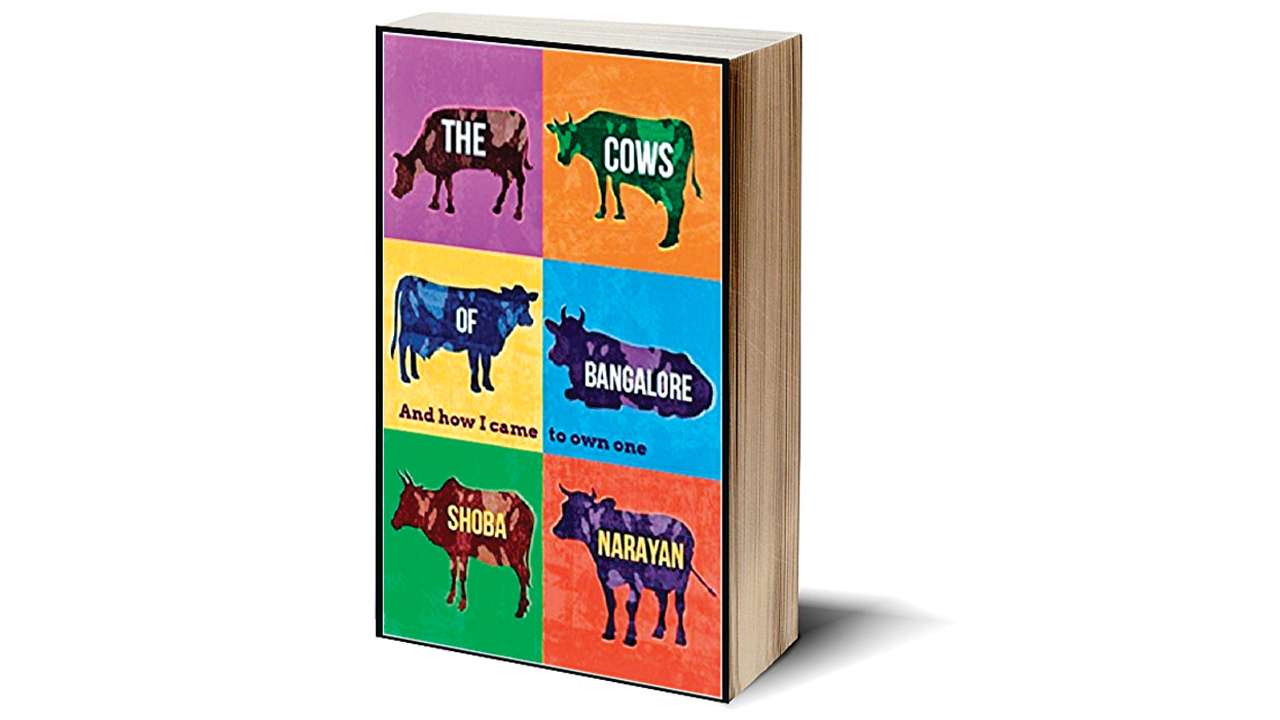
Book: The Cows of Bangalore: And How I Came To Own One
Author: Shoba Narayan
Publisher: Simon and Schuster
Pages: 296
Price: Rs 350
Have you seen the cartoon on WhatsApp of two cows looking contemptuously at a man in a robe meditating [chanting om] out in the field? One says to the other, "Some spiritual soul. Dude's got 'moo' backwards." That may be funny, but if you observe a cow closely you might just be convinced that they are the spiritual ones. Look at Shoba Narayan's description of the beatific state of cows walking down the road, 'their heads moving back and forth earnestly. They have a dignity about them that is unshakeable, quite literally. They may be in the middle of the road, surrounded by crazy, honking traffic, but they move slowly...' There are also a number of beliefs that point to the divinity of a cow. All the parts of its body are said to be inhabited by gods and goddesses, 33,000 of them, so when Sree, 'the fickle goddess of fortune' wants to join them, they shout "No!" Sree pleads and they relent – reside in the moist dung of the cow they tell her, 'which is why Indians link cow dung with prosperity'. The Garuda Purana contains passages about donating a cow when a person dies so he can hold onto its tail and get a safe journey beyond three hells.
This is a charming book about Narayan's discovery of the lives of dairy farmers and their cows, interspersed with information from modern research and ancient texts. It becomes our journey of discovery too. We get to know how cow shopping is no joke and takes days and much effort; how cows that have been part of a family for generations are extremely sensitive to whatever happens in the house – if someone is ill, the cow will eat a particular type of grass so that her milk can heal the person. Besides this, cow dung has healing properties and cow urine absorbs beneficial radiation from the sun and spreads positive energy. After the gas tragedy in Bhopal, thousands died, except in one place. Here, every house was smeared with cow dung. Another fascinating fact is that the predecessors of cows were wild aurochs, who appeared in the Indus Valley two million years ago. They were the size of a truck, nine to ten feet tall, absolutely wild!
Narayan also narrates myths like that of a king who hangs a giant bell outside his palace that his people ring for justice. One day the king hears the bell and is astounded to see a cow pulling at the rope. The king's son has run over her calf with his chariot and she wants justice. What does the king do? He runs over his own son. You can see the king's statue at the entrance of the Madras High Court 'as a potent if largely ignored reminder of how the scales of justice ought to work'.
This is a thoroughly researched book but Narayan doesn't make it hard to read. In fact, she writes with a lot of humour and a lightness of touch. There is that lovely beginning when a cow is forced into a lift so she can go to the third floor and walk through an apartment to bless it. But there are also very moving moments when she talks of her dog, Inji.
With all the emphasis on the cow these days, our politicians should read the book – I know gau-rakshaks won't – so that they come up with more knowledgeable answers than the trite, "The cow is our mother."
Actually everyone should.